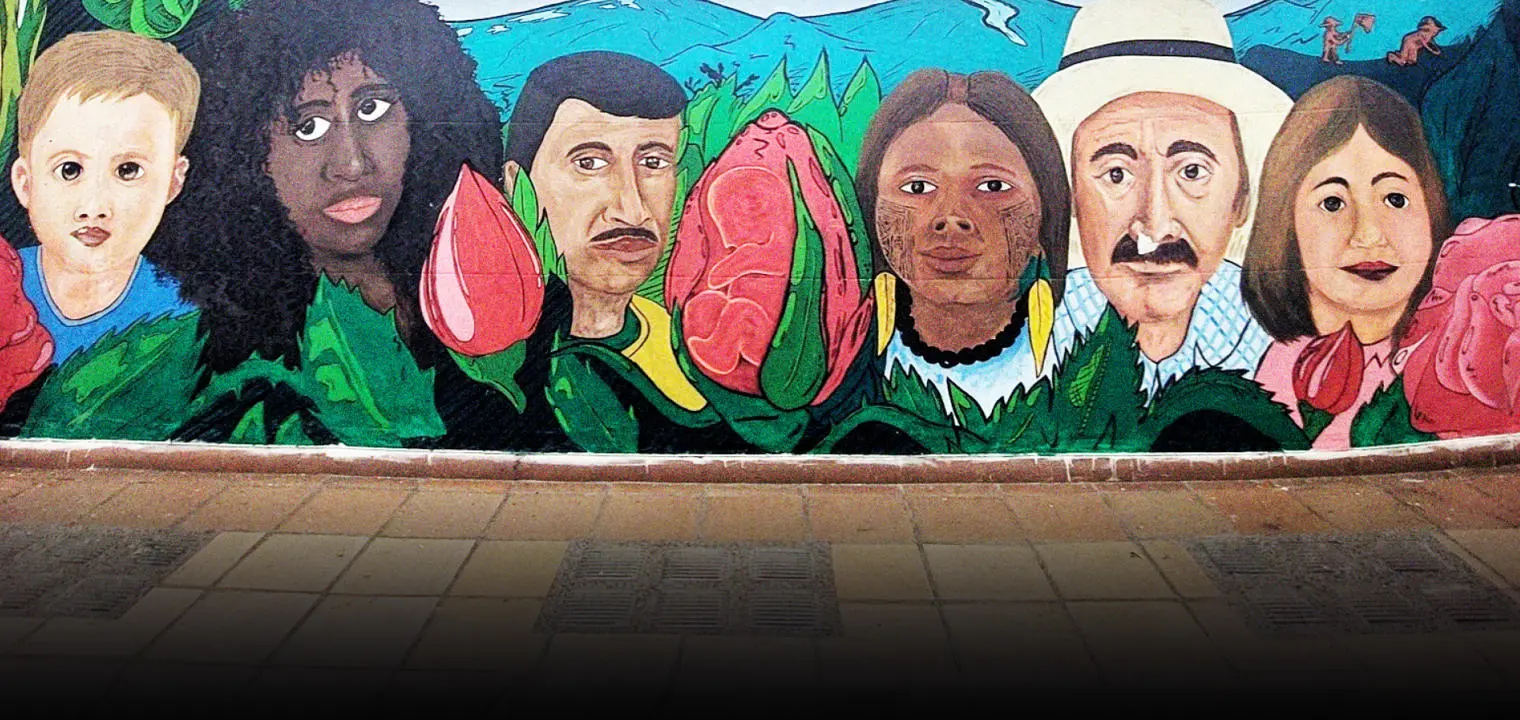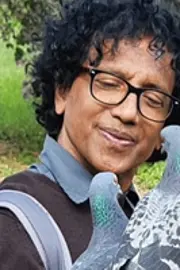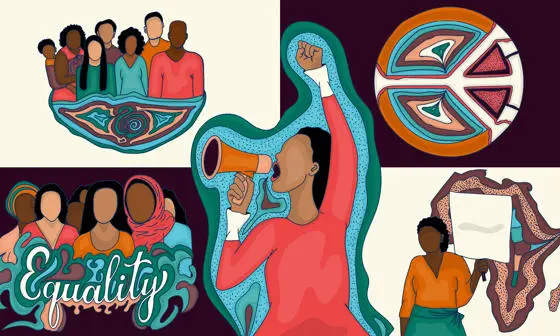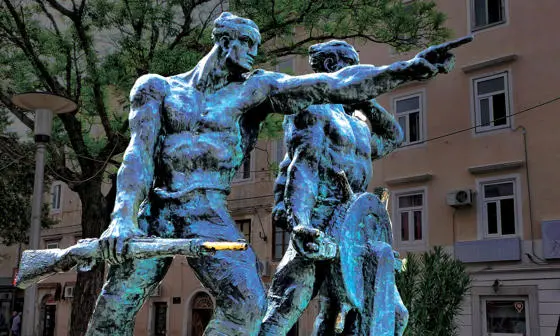How do we achieve durable peace in situations of persisting conflicts? Lessons from the Colombian Peace Agreement of 2016

Contents
In the last 30 to 40 years, half of the world’s poorest countries have faced persisting conflicts either between two groups of people within a country, or between groups and the state (civil war). What would be the best way of finding a lasting solution to these kinds of persistent conflicts? This is the question Dr George Kunnath, Assistant Professorial Research Fellow in the International Inequalities Institute at LSE, posed to a live audience at a recent Research Showcase event.
One place to turn for some insight, he argues, is the Colombian Peace Agreement of 2016, which ended over 50 years of armed conflict between FARC guerrillas (the Revolutionary Armed Forces of Colombia) and the Colombian state. "What is special about this agreement is that it is a comprehensive agreement aiming to address the intersecting inequalities of race, class, ethnicity and gender," Dr Kunnath explains. Its explicit focus on gender in particular forms the basis of his latest research project, funded by the Atlantic Equity Challenge.
There is also a violence that is embedded, a structural violence, and that is in relation to poverty, in relation to gender oppression, infant mortality rate, illiteracy… and none of them are ever addressed when they talk about a ceasefire.
Can peace agreements end persisting conflicts?
Very often peace talks are aimed at putting an immediate end to a conflict – to bring about a ceasefire, to de-militarise the guerrillas, to end the direct violence against people.
"But there is also a violence that is embedded, a structural violence, and that is in relation to poverty, in relation to gender oppression, infant mortality rate, illiteracy… and none of them are ever addressed when they talk about a ceasefire," says Dr Kunnath. A durable peace, he argues, relies on these inequalities being tackled.
The start of that process involves bringing in multiple stakeholders - the victims of violence, combatants, indigenous people living in the midst of violence, civil society organisations, international organisations, and so on.
It was key for Dr Kunnath to build this kind of collaborative approach into his project as well. "In the methodology itself, when we do data collection, it should be transformative, it should be collaborative as much as possible," he explained. His team is working with female ex-guerrillas, Afro-Colombian and indigenous women, and LGBTQ+ people to understand, and give voice to, their experiences and needs in peacetime.
The Colombian context
To understand the example of the Colombian peace agreement, we have to first understand the context. FARC was formed in 1964 and by 2000 it controlled large parts of rural Colombia. In the 2000s, the USA provided $7.5billion of funding for "Plan Colombia", a project to counter drug cartels and the rebels. The subsequent fighting killed over 250,000 people and displaced over eight million.
The Colombian terrain makes it impossible to completely destroy an armed guerrilla movement, some areas are inaccessible, so an agreement between parties was the only way to bring an end to the conflict. Several peace agreements were attempted over the years. In 2005 the rebels came into the open as part of an attempted peace process, but over 5,000 were killed by paramilitary organisations, which drove them back into hiding. When the comprehensive agreement was eventually signed in 2016 over 13,000 guerrillas demobilised, of which 3,000 were women.
They knew the peace could only last if they addressed the inequalities in urban areas, and a major part of the process was to create a new Colombia in the rural countryside.
Insurgent feminism
These female ex-combatants played an important role in the peace negotiations - for the first time in the history of peace agreements.
Dr Kunnath describes how they formed a new type of feminism – insurgent feminism – to bring out their more egalitarian experiences of fighting shoulder to shoulder with the men, sharing the leadership responsibilities, "in order to counter hegemonic masculinities and to encourage power sharing in the peace agreement and in wider society." They worried that in peacetime the patriarchy would reassert itself.
In the end, "out of 578 stipulations, 130 had a gender focus," recounts Dr Kunnath, "that included participation of women and LGBTQ+ communities in the implementation process."
Provisions for peace
"They knew the peace could only last if they addressed the inequalities in rural areas, and a major part of the process was to create a new Colombia in the rural countryside," Dr Kunnath continues. Other provisions included the political participation and reincorporation of demobilised groups and ex-combatants; a solution to the problem of illicit drugs (cocaine had played a significant role in the conflict); the addressing of concerns of victims of the conflict; and a process for implementation, verification and public endorsement of the agreement.
After signing the agreement, 26 camps were built for demobilised guerrillas – for the purposes of reintegration, training and capacity building. Illicit crops of coca were replaced with coffee, which former guerrillas could harvest.
Peace in peril
Dr Kunnath admires the ambition of the peace agreement, but says it has not been smooth sailing for the peace process since 2016. One major issue is security, he explains: "Since the peace agreement 317 former guerrillas have been killed by paramilitaries or criminal gangs, so they feel very threatened, they feel vulnerable as they don’t have weapons anymore."
Other obstacles include a lack of effective reincorporation and state neglect of rural development, which was a major provision of the agreement, due to inadequate funding and changes of government. The reintegration camps built for the guerrillas are also no longer fit for purpose – suitable only for single combatants returning from war, and not the families that have now developed. "They feel they need more dignity in their accommodation," explains Dr Kunnath, "in the forest, there was more dignity."
A positive peace
"A positive peace is that which would address the structural inequalities which are the main cause of conflict," Dr Kunnath declares. The Colombian example reveals some essential components: rural development (land reforms, health care and education); the tackling of intersectional inequalities; justice for victims; participation of marginalised groups in the process and engagement with their concerns; and security and reintegration of former combatants. "There also has to be international monitoring of the peace agreement, you cannot leave it just to the nation state alone where the conflict has occurred," he concludes. "When all that happens, a lasting positive peace can happen."
This LSE Research Showcase was written up by Louise Jones, Head of Research Communications and Engagement at LSE.
Image: Mural from the office of COMUNES, political party of the former FARC guerrillas, in Medellin by George Kunnath.
Download a PDF version of this article




